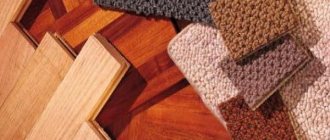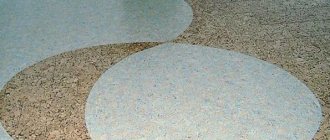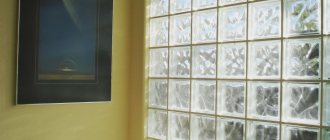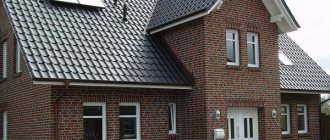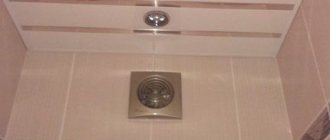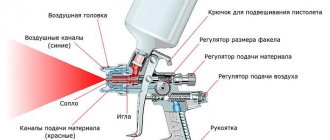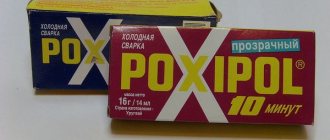Neon lamps are bright modern representatives of lighting devices on the market, which are distinguished by their reliability and durability. Thanks to this, they are used in a wide variety of areas, from building lighting to interior lighting of apartment rooms. A neon lamp looks like a glass tube that is filled with a small amount of gas. Gas is driven into neon lamps at low pressure.
Note! Not just any gas is used here. A neon lamp contains neon as an inert gas. This is where its name actually came from. But other inert gases can also be released into neon lamps.
Lamp design
A characteristic feature that all such light bulbs have is that any atom in them has a completely filled electron shell. As a result, neon atoms never interact with other atoms to capture new electrons. Moreover, in order to tear off at least one electron from them, a lot of energy will be required. The glass tube, which is the basis for such a light bulb, has an electrode at each end. A neon lamp can be powered by AC or DC power. But if neon light sources are connected to DC current, neon light will only be observed around the electrodes. Because of this, most often the neon lamp is connected to an alternating current source.
Lamp glow
Note! These bulbs are often connected to high voltage (about 15,000 volts). This voltage is sufficient to remove an electron from the outer orbit of an atom. At low voltages there will be no effect.
The entire operating principle of lamps is based on the properties of inert gases.
Principle of operation
According to the principle of operation, lighting devices are similar to gas-discharge ones, but there are still some differences. The neon atoms in the glass tube are covered with an electronic shell, due to which they do not come into contact with the others. In order for at least one electron to come off, powerful energy with a voltage of 15,000 V is required.
Each end of the glass tube is equipped with electrodes. Neon lamps have an important feature - they can operate from both alternating and direct current sources. But in the latter case, the glow will appear only at the location of the electrodes.
Let us briefly describe the operating principle of such a lamp:
- Electric current, acting on neon atoms, causes them to lose their own electrons. The latter turn into positively charged particles.
- They then accumulate near the negative electrode located at one end of the tube.
- The remaining free electrons tend to the positive electrode.
- As a result of these actions, a glow is formed. Moreover, its brightness is no worse than LED lighting.
Types of sockets for LED lamps
Rezbovoy, E (Edison)
The most common type of holders. The letter E directly refers to the father of this light bulb - Thomas Edison. The threaded base is the most universal mounting method, not only because of its simplicity, but also because it operates on 220 V.
Standard LED bulb with E-27 threaded connector.
Known models of LED lamps with type E connector:
- E5;
- E10;
- E12;
- E14 (minion);
- E17;
- E27;
- E40.
Find out also: What is the difference between E14 and E27 sockets.
Pin, G
LED lamps with connectors marked with the letter G are no less in demand.
Such holders are visually similar to a fork.
The most commonly used models are:
- GU3 (for 220 V or 12 V network);
- G4 (12 V or 24 V);
- GU10 (swivel base);
- G9 (for decorative LED lamps);
- G13;
- G23;
- GX53 – a light bulb with a screw-on holder, used for installation in suspended, suspended, or plasterboard ceilings;
- GX70 – differs from GX53 only in the distance between the pins.
Telephone, T
This type of LED light bulbs is not used in everyday life. Areas of application – electronics and industry:
- control panels;
- automatic shields;
- power plants.
The bulbs have an oblong appearance and resemble a flask.
The number after the letter T in the marking shows the external width, which is measured using the contact plates.
Pin, V
This type of holder is essentially an improved version of Edison's threaded sockets. It was designed for smaller types of lamps, which, if necessary, can be quickly replaced. The LED pin base is distinguished by round pins located on the sides. Using these parts, the holder is inserted into the cartridge.
One of the pins is clearly visible here.
There is also a BA model with asymmetrically located pins. Such lighting devices are used in car headlights, lights on ships, and trains.
Holder with recessed contact, R
R-type sockets are rarely used in LED lighting. These holders are more common for halogen and quartz bulbs. Most often, connectors with recessed contacts are used in small, lightweight luminaires that are part of high-intensity lighting systems. A simple example of such an installation is street floodlights.
The most famous model of the holder with recessed contact is R7s. On the marking, after these symbols, the numbers 78 or 118 are indicated. This is the total length of the lamp in millimeters.
Sofitny, S
Soffit holders are marked with the capital letter S. They are equipped with contacts on both sides
Car enthusiasts, of course, know the importance of lamps with soffit bases for illuminating license plates. In addition, S-bases are used to illuminate mirrors, bathrooms, as well as stages in theaters and concert halls.
The number after the letter S indicates the diameter of the housing.
Typical soffit base.
Focusing, R
The main task of this type of base is contained in the name itself. Film projectors, spotlights: all these lighting devices cannot be imagined without lamps with focusing holders. The main nuance of the design of such connections is a special lens. It collects and then scatters the light flux in the desired direction. The number in the marking indicates the diameter of the holder body.
Characteristics and types of neon.
Gas discharge light sources.
A neon lamp operates using low current. It operates on alternating and direct voltage. In the first case, the entire tube glows, and in the second, the area near one electrode.
Due to the low inertia, dimming is possible based on the pulse width modulation (PWM) mechanism.
The service life is long: about eighty thousand hours. It is limited by the properties of the flask: darkening from the electrodes and gas absorption. In principle, a gas-discharge lamp cannot burn out.
The tubes vary in diameter: 8, 10, 12, 15, 20 mm lamps are available. The higher the diameter, the longer the light source. For eight-millimeter neon tubes, the length ranges from one to seven meters. For ten-millimeter ones: from 1.2 m to 8.2 meters. With a diameter of 12 mm, the length varies from one and a half to ten meters. A tube with a circumference of 15 mm will be from two to 12.5 meters long. A light source with a diameter of 20 mm has a length from 2.5 to 20 meters.
During production, tubes of different shapes and sizes are made. Even in the form of letters in the most intricate fonts. Their diameter varies from five millimeters to two centimeters.
For home lighting, miniature tubes are produced: from 10 to 18 millimeters. This allows lamps to be mounted in hard-to-reach, narrow spaces.
Neon lamps come in different types. They are called neon because of their similar color and soft glow.
Flexible neon.
They consist of a polyvinyl chloride (PVC) tube and LED garland. Depending on the type of PVC they will be matte or transparent. By type of LEDs - single-color or multi-color.
Flexible neon.
Flexible neon is characterized by a constant light. To complicate the work - producing flickering and blinking - special controllers are built into the electrical circuit.
Advantages of flexible neon over tubes:
— mechanical resistance;
- waterproof;
— ease of installation;
- decorativeness;
- low price.
Cold neon.
Structurally different from usual. It is a flexible copper wire painted with a special phosphor. A dielectric layer is applied on top of the phosphor and thin contact wires are wound. The structure is protected from above by a polyvinyl chloride shell.
Cold neon device.
Current is supplied to the center wire and to the wound wires. When electricity flows, a magnetic field arises in which the phosphor begins to glow. The light is very soft, similar to the light of gas discharge lamps. Depending on the composition of the phosphor, different colors are possible. This wire is very flexible, thin, and shines continuously along its entire length and around itself. It is beautiful, waterproof, durable.
Cool neon colors.
Cold neon operates at an alternating voltage of several hundred volts with a frequency of 500 to 5500 Hz. Therefore, connecting to a home network is not possible. Special converting inverters are used. Depending on the model, they can operate from different power sources.
Neon indicator lamps.
Due to the low current consumption, they serve to indicate that the normal mains voltage is turned on. The device is a three-electrode (one anode and 2 cathodes: indicator and auxiliary) small-sized gas-discharge lamp. Voltage is supplied to the indicator contact - the lamp shines brightly - the network is 220 V. To the auxiliary cathode - it goes out - human intervention is required.
Indicator lamp.
Indicator lamps are easy to maintain, reliable, cheap, and last a long time.
Phosphor composition
Luminescence is the ability of materials to glow with the onset of darkness or when the artificial light source is turned off. This effect can be given to any object by treating it with a special luminous paint, which is also called phosphor, luminescent, fluorescent or self-luminous. Enamel accumulates light energy during the day, and then continuously releases it in the dark. The duration of “work” of such paint without external lighting is about 8–12 hours. The cumulative glow process is a continuous cycle and can be used for several years.
The glow of the paint occurs due to the presence of a special component - phosphor (luminescent pigment). The luminous powder adapts well to the environment, is frost- and heat-resistant, has stable chemical and physical properties and a long service life - more than 30 years. It is used for both external and internal work.
The phosphor is combined with a transparent carrier, usually an acrylic, alkyd or polyurethane-based varnish. The standard proportion of components is 1:3. The type of varnish does not affect the brightness of the glow, but this criterion largely determines the scope of the paint and the durability of the coating.
In addition to the phosphor, the luminous paint includes colorless varnish, which is the main component of the material. The type of varnish (acrylic, alkyd, polyurethane) determines its durability.
Powdered phosphor
Advantages and disadvantages
Using neon devices to illuminate various objects has its positive and negative aspects.
Among the advantages of such lamps are:
- Neon has a special glow, and the light it produces does not produce contrasting shadows;
- You can find a huge number of different shades;
- Using controllers, you can adjust the light intensity of the lamp and its color;
- The light flows uninterruptedly, without darkened parts and spreads 360 degrees;
- High-quality devices can last up to 20 years without interruption;
- The operation of the backlight does not heat up the lamp much, because its temperature does not exceed 50 degrees, which makes these lamps safe;
- Tubes can be straight and can be made in virtually any possible shape, which significantly expands the possibilities of their use: tubes can even be made in an original shape to decorate a certain design;
- Possibility of installation even in hard-to-reach places;
- Soft glow and moderate brightness, which does not irritate the eyes, no noise during operation.
But this gas also has not very good sides:
- The power of neon lamps is less than that of conventional lamps and is seriously inferior to lamps with LEDs. Such tubes use, on average, 10 watts per hour per meter;
- Gas in tubes and cords may contain hazardous components. This requires special care when installing the structure. Used tubes are not thrown away with regular garbage - they require separate disposal;
- Glass lamps are quite fragile, if 1 of them breaks, then there is a chance that neighboring devices will immediately go out;
- Backlighting from such lamps can be unsafe if installed incorrectly - an arc discharge may occur when the seal of the glass tube is destroyed;
- The backlight does not provide such a large amount of light power that it is enough for normal room illumination and therefore cannot be used as the main lighting device, but only as lighting for decoration. In a room equipped with such lighting, it is imperative to install several conventional lighting sources.
Advantages and disadvantages
There are several advantages and disadvantages to using neon lamps. We highlight the following advantages:
- lack of contrasting shadows;
- numerous shades;
- using controllers you can change the light intensity and color;
- The service life of high-quality products reaches 20 years;
- the lamps are safe because when the light is on, the glass tube heats up slightly, up to 50 0C;
- variety of tube shapes - from straight to curved;
- production of original designs for interior decoration;
- ease of installation—can be installed in hard-to-reach areas;
- bright but soft glow that does not irritate the eyes;
- noiselessness.
Along with the advantages, there are also several disadvantages:
- Compared to conventional lamps, neon lamps are characterized by lower power (significantly inferior to LED lamps) - usually the tube produces about 10 W per 1 sq. m;
- the mixture with which the glass tube is filled may contain hazardous substances - therefore, despite the ease of installation, in some cases a professional approach is required;
- failed neon tubes require special disposal;
- the tubes are made of fragile glass - if at least one is destroyed, neighboring ones may be damaged;
- incorrect installation makes the devices unsafe, and a violation of the seal leads to the formation of an arc discharge;
- Due to its low power, it cannot be used indoors as the main lighting device, only as a decoration.
An arc discharge occurs in a gas and is characterized by a high current density and voltage drop.
Dimensions
When making a tube, you can bend it as you like or extend the glass tube to any desired length. From such a product you can create not only any letter, but also an entire word and inscription, and any font can be used.
Tubes with neon, unlike fluorescent devices, can have different parameters, which makes it possible to use them when creating advertising lighting of various forms.
Illumination with inert gas is especially popular in the production of letters made of plastic and metal, because no other lamp can duplicate their intricate shapes.
The diameter of such tubes can range from 5 mm to 2 cm.
In general, the larger the diameter of the product, the lower the pressure of the inert substance in it will be and much less power will be required for combustion.
The best is called backlighting of letters with a height of 30 to 40 cm in 1 thread, from 40 to 80 cm in 2 threads, from 80 to 120 cm in 3 threads.
The main advantage of neon lamps used to create home lighting is their miniature size, from 10 to 18 mm. Thanks to this feature, neon lighting can be installed behind window cornices and in room niches, along baseboards and in other hard-to-reach places.
Apartment neon lighting options
On the market of goods and services, among neon lighting devices you can find strips, which many call flexible neon. In appearance, the ribbons resemble a garland, which is located in a tube made of PVC material.
Flexible backlights can be multi-colored or monochromatic. During the production process, high quality materials are used, as a result of which the tubes can be matte or transparent. Single-color options are exclusively matte.
Such strips, unlike light bulbs, have a large number of advantages, among which are:
- the likelihood of causing damage is minimal, glass lamps are quite easy to break, which is why they are considered dangerous:
- presence of waterproofing;
- since the tape is flexible, it can be installed absolutely anywhere;
- Unlike LED lamps, neon strips are much cheaper.
Due to such demand, it is likely that many lighting devices will be forced out of the market for goods and services.
Important! Neon lights, unlike other light sources, have a fairly wide range of light
Neon lamps for apartments
Neon lamps can be used in living spaces to illuminate furniture. This way you can fill the room with unusual and bright color tones. Most often, this option is used when the room contains upholstered or glass furniture.
In addition, you can use additional light for decorative elements and accessories. For example, in close proximity to paintings, in niches, around large mirrors, tall indoor plants.
It is important to understand that neon lamps can be used in a living space not only as a bright accent. For example, such lighting fixtures are often used to brighten stairs or baseboards. If necessary, light sources can be mounted in pieces of furniture in the kitchen area
If necessary, light sources can be mounted in pieces of furniture in the kitchen area.
An interesting option is lighting sculptures made of plaster, glass or fabric. In a room, a beautiful sculpture will look much more impressive as a light source than an ordinary lamp. Today, lamps made in the shape of birds made of glass or wood are popular.
Advice! By giving preference to neon lighting to decorate the design of the room, you can create a wonderful design that will create a festive atmosphere.
Flexible neon lights
Flexible tapes look quite organic and presentable in the design. With their help you can give the room some zest. In addition, you can take them with you to nature, which will create an unusual atmosphere.
Flexible devices are indispensable in everyday life; they can be used to illuminate the ceiling around the entire perimeter, creating a floating effect, or be mounted in an aquarium or furniture. If necessary, you can make the light turn on when the cabinet door is opened, using neon laces for this purpose.
Such light sources fit perfectly into the kitchen, as they can be mounted in furniture above the work surface. Due to their flexibility, such tapes can be used on any surface and given the desired shape.
Colors
It is worth clarifying that a neon lamp can shine in all colors. Neon lamps are the closest “relatives” of fluorescent devices. Glass tubes are filled with different types of gases, and the type of gas chosen can affect the color of the light:
- Tubes filled with neon itself can produce red and orange light;
- Helium ones illuminate the space with blue and pink;
- Argon glows with lilac and blue light;
- Krypton gives bluish and white colors, sometimes a green tone;
- To obtain other colors, impurities of these gases are used or phosphors, for example, mercury vapor, are introduced.
Neon lighting may depend on how much different the excitation energy given is from the original one. These sizes, like the energy parameter of the electron, have their own interval. As a result, it turns out that any electron in a state of excitation receives its own, characteristic only for it, wavelength of wave-like light. It turns out that neon light gives a unique glow.
Despite the fact that obvious competitors - fluorescent lamps are extremely in demand these days, neon products hold their high position in the world of modern lighting devices.
How do they work?
A neon lamp consists of a bulb in which the following processes occur: when moving, electrons collide with neutral gas atoms, which are fillers in this area, and begin to ionize them, pushing electrons from the upper area into the container. The atoms, in turn, collide with electrons, again becoming neutral atoms. Thanks to this reverse transformation, a quantum of light energy is emitted. As you can see, the operating principle of neon lamps is not very complicated.
To calculate the required illumination of a room, you can use the appropriate calculator.
When turned on, such devices do not heat up much - the heating temperature reaches a maximum of 80 °C. It is for this reason that neon tubes are also commonly called cold cathode lamps. Their scope of application is quite wide, as they are durable, economical and functionally flexible. The main advantage of such light bulbs is that they can have any shape you like.
Any inert gas and metal vapor has its own spectral light composition:
- helium tubes emit light yellow or pale pink light;
- neon tubes - red light;
- argon tubes - blue light.
Examination
Before purchasing neon lamps or flexible strips, you need to figure out how to test them for functionality and eliminate defects. First you need to inspect it visually, then test it under voltage.
It is enough to connect the lamp to the radio broadcast network through a low-frequency transformer or use an alternating current network. As a last resort, batteries and a low-frequency power transformer will help solve this problem.
To check a fluorescent lamp, you need an electronic or electromagnetic ballast. The first is used more often.
It would not be superfluous to compare the performance and glow of the lamp being tested with a similar one (with identical parameters). It is important to follow the connection sequence to the circuit. If the lamp works normally, then look for a fault in the unit.
Ways to get rid of “blinking” lamps
Everyone loves backlit switches - beautiful, convenient, inexpensive, practical. But they are ideally compatible only with incandescent lamps - conventional or halogen. It’s generally better not to use them with housekeepers - they blink constantly. Can work with high-quality dimmable LEDs. But only high quality ones. Read - dear. And then, over time, if there is a low-quality transformer somewhere, problems may begin. This means that either the lamps will shine at full intensity, or they will “burn out” when turned off. So, connecting an illuminated switch is only possible with “old” lamps?
Convenient - no need to look on the wall
There is a solution to the problem, and even several. Varying degrees of difficulty. Moreover, not all of them work and do not always work. So you can try them one by one. Here's how to make friends with an illuminated switch and LED bulbs:
Any home equipped with electric lighting has switches. To make it easy to turn on the light at night, the switch is often equipped with a backlight, which is designed in such a way that it glows when the lighting in the room is turned off.
Before connecting a backlit switch, you need to clarify the type of lamp. This is because the backlight only works well with incandescent and halogen lamps. For luminaires with ballasts, the use of backlit switches is not recommended.
A backlit switch differs from a regular one only in that there is a backlight indicator inside it. This indicator may be a neon lamp or an LED with a limiting resistor. The backlit switch circuit is quite simple.
The indicator is connected in parallel to the switch terminals. When the lighting device is turned off by the switch, the backlight indicator is connected to the neutral wire of the network through a low resistance and lights up. When the lighting is turned on, the indicator circuit becomes short-circuited and it goes out.
If the indicator is on, the lighting lamp does not light up, since the current required for its normal operation passing through the indication circuit is insufficient.
Based on functionality, there are backlit, push-button and other rarely seen types.
Installation and connection
The installation process of neon lamps is as simple as possible. First, the lighting fixture holder is attached to the selected surface, and only then the light bulbs are installed.
To connect to the network, resistors are used to limit the amount of electric current. In most cases, they are built into the lamp base. It is important to exclude the possibility of transforming a glow discharge into an arc discharge, which is dangerous to humans.
During the installation process, several basic requirements must be met:
- Mounting the converter on metal structures is strictly prohibited. If such a need cannot be avoided, then a special gasket with a thickness of 10 mm or more is used. The distance between the lamp and the metal surface must be at least 40 mm.
- When laying the cable, you need to use distance-type holders, since it must also be distant from metal structures at a distance of at least 30 mm.
- For outdoor installation, additional protection of the wire is important - corrugated PVC hoses are used.
Neon lamps should not be used as primary lighting devices. On the other hand, with their help you can create a unique atmosphere in the house, decorate the facade, summer veranda, gazebo, attract the attention of people passing by the store, and place accents on the most striking and important elements of the interior. With proper and safe installation, you can enjoy the results for several years.
Application area
Both lamps and cords consisting of inert gases are used everywhere. They began to be used for:
- production of hidden lighting;
- decorative design of the external area of buildings, architectural structures, monuments and so on;
- lighting of advertising structures;
- decorating unusual interiors in any residential premises and other public places.
Neon lamps used today in home interior design look very organic and presentable. With their help, you can transform any room and add your own special touch to the decoration style. They are indispensable for organizing a picnic in the evening; you can use them to create an extraordinary atmosphere.
In everyday life, such a tape is also very valuable. It is an ideal solution for illuminating the ceiling area, aquarium, as well as any cabinet. You can make sure that when you open the cabinet, the light installed in it using a neon cord automatically turns on.
The tape can also be useful in the kitchen area - if it is noticeably dark when washing dishes or preparing food. You can simply install a neon strip of the required length in the required area. And there are a huge number of such ways to use this tape.
As you can see, the scope of application of such universal lighting devices is quite extensive. This is explained by their advantages, among which it is worth noting high quality and beautiful luminous flux. Only LED strip can compete with them.
These representatives of lamps today provide the brightest luminous flux, which opens up wide areas of application for them. But in order to use them correctly, you need to have a good understanding of the product.
Connection diagram for neon lamps.
Gas-discharge light sources are connected to the power source through a resistor. It is inserted into the circuit to limit the current to 1 mA (or better, to tenths of a milliampere). Low current increases service life. Operating a gas discharge lamp without a resistor poses a threat to human health. The use of a resistor prevents the transition of the discharge to an arc, which can lead to a short circuit and explosion of the lamp tube. The design of some light sources immediately includes a resistor: it is mounted in the base. It is worth carefully studying this issue when purchasing.
Discharge lamps require high voltage. A household outlet does not do this. A step-up transformer is required. Its parameters depend on the dimensions of the lamps, their quantity, and the filling gas. The required voltage varies from 2000 V to 12000 V. For example, for lamps filled with neon there is the following dependence of voltage on length.
| Transmitter voltage, kV | Tube diameter, mm | ||||
| 8 | 10 | 12 | 15 | 20 | |
| 12 | 7000 | 8200 | 10000 | 12500 | 18000 |
| 10 | 6000 | 7000 | 8000 | 11000 | 15000 |
| 0,9 | 5500 | 6300 | 7500 | 9500 | 13500 |
| 0,8 | 4700 | 5400 | 6300 | 7400 | 11000 |
| 0,7 | 4100 | 4800 | 5800 | 7500 | 10500 |
| 0,6 | 3600 | 4000 | 4900 | 5800 | 8800 |
| 0,5 | 2900 | 3300 | 4000 | 5000 | 7300 |
| 0,4 | 2200 | 2500 | 3200 | 4000 | 5800 |
| 0,2 | 1000 | 1200 | 1500 | 2000 | 2500 |
| Transmitter voltage, kV | Tube diameter, mm | ||||
| 8 | 10 | 12 | 15 | 20 | |
| 12 | 7000 | 8200 | 10000 | 12500 | 18000 |
| 10 | 6000 | 7000 | 8000 | 11000 | 15000 |
| 0,9 | 5500 | 6300 | 7500 | 9500 | 13500 |
| 0,8 | 4700 | 5400 | 6300 | 7400 | 11000 |
| 0,7 | 4100 | 4800 | 5800 | 7500 | 10500 |
| 0,6 | 3600 | 4000 | 4900 | 5800 | 8800 |
| 0,5 | 2900 | 3300 | 4000 | 5000 | 7300 |
| 0,4 | 2200 | 2500 | 3200 | 4000 | 5800 |
| 0,2 | 1000 | 1200 | 1500 | 2000 | 2500 |
To supply such a high voltage, high-voltage wires are needed. Their insulation must withstand at least 1.5 hours of operating voltage. As an example, let's take the PMVK wire. It is inexpensive, can withstand up to 20 kV, and operates from -60 to +80 degrees.
Remember, to connect neon lamps yourself, you need good electrical knowledge. Working with high voltages requires a high level of electrical safety. Don't forget about your own safety!
There are two schemes for connecting lamps to a transformer. The first of them is standard. The lamps are connected in series to the transformer, and the transformer to a 220 V network.
Standard electrical diagram.
Zero point circuit.
The lamps are connected in two groups on opposite sides of the transformer. An equal number of light sources of the same type are used (in terms of size, gas filling).
The zero point circuit allows you to reduce the length of the wires. If one lamp breaks down, only one part of the circuit will stop working, and the second will continue to shine.
Due to its design, cold neon consumes less energy than regular neon. It can be powered from a low voltage power supply. To create the necessary electrical parameters (voltage, frequency), an inverter is built into the circuit. Depending on the model, inverters can be powered by twelve-volt power supplies or five-volt batteries. Up to three meters of neon can be connected to the batteries. And to the 12 Volt power supply - up to twenty meters.
Connection diagram to a power source via an inverter.
When installing, follow these simple rules:
- Wires and lamps should not come into contact with metal. If necessary, use polycarbonate holders.
- If two or more transformers are used, the wires from them are separated at a distance of more than 20 cm.
- The place where the wires pass through the metal is placed in a PVC pipe.
- All metal parts and the transformer must be grounded.
How to connect an illuminated switch
The operating principle of the device is based on Ohm's laws. Electric current flows along the path of least resistance when lines of different resistances are connected in parallel.
The connection circuit has the same high resistance regardless of the type of indicator used - neon bulb or LED. This indicator is provided by a limiting resistor.
Where to put the wires
Before you begin installing a switch with an indicator, it is important to understand the design. To do this, it is recommended to remove the keys
Most often they are fixed to the body using pins or a latch.
Under the keys you can see terminals for connecting wires. They almost always visually appear as small copper pads with screws.
Connecting a light switch with one backlit key
The connection diagram is extremely simple - zero is supplied directly from the panel to the lamp, and a phase is supplied to one of the switch terminals. From the second terminal the wire is fed to the output of the lighting fixture.
Implementing this scheme is simple and quick. The number of terminals depends on the number of keys in the switch. The single design has only 2 terminals, and the socket box must be equipped with two wires. It is simply impossible to get confused. You need to run one wire under the terminal from the panel, and the second from the lighting fixture. Where and what does not matter.
How to connect a switch with two keys and backlight
The connection diagram of this electrical structure is not much different from the previous one. A three-wire wire is brought out into the socket box. Two wires are intended for a group of lighting devices, and one for power supply. This is where all the differences end.
In implementation, the method is a little more complicated, since you need to find a phase conductor and connect it to the required socket. The double switch is equipped with three contacts for connection. The phase is most often displayed in brown or red, and the color of the wires from the lighting device may be the same. Before connecting, the presence of phase voltage is checked, and if necessary, the wire is marked.
Comparison of LED strip with neon.
LED strips.
Gas discharge lamps have several advantages compared to LED strips:
- softness of light (LED – very sharp, contrasting);
- uniformity (LED light sources shine in dots);
- the ability to bend neon in any direction (LED strip bends only in one);
- little or no heating.
However, LED strip consumes less electricity and makes it possible to use more colors. It is also environmentally friendly, whereas gas-discharge light sources may contain mercury vapor.
Where are neon lamps used?
Liquid neon is used for cooling in cryogenic plants (air separation plant). Previously, neon was used in industry as an inert medium, but was replaced by cheaper argon.
Neon light sources are used as an indication:
- Control and indicator lamps for the presence of mains voltage 220 V.
- Probe indicators. They are used to detect the presence of alternating voltage on phase conductors (wires) or on the housing of electrical receivers. ATTENTION! Such indicator probes must be connected in series through a 1 MΩ resistor in order to protect a person from electric shock. Low pressure neon lamps are excellent for this task as they have very low current consumption and are therefore very sensitive.
- Balizor - high-voltage signal lamps-markers. A neon light source can flare up without a direct source of electric current, but only when exposed to an electromagnetic field. An example of the use of this property of neon lamps is the Balizor lamp, used for the quality of light indication of overhead lines.
The difference in simple circuit diagrams of signal neon lamps and LED lamps is shown below
Neon indicator connection diagram
LED indicator connection diagram
Neon lamps are also used as an element of overvoltage protection in telemechanics and alarm circuits, provided that the maximum permissible voltage is below the lamp's flare-up threshold, and causes it to glow during voltage surges.
The use of decorative gas-discharge lighting is limited by imagination.
At home, neon is used to create accent lighting on furniture, mirrors, and interior items. This lighting creates a festive atmosphere on any day.
Neon lamps indicate steps, baseboards, and switches.
Neon is used to decorate bars, cafes, and restaurants. Illuminated by gas-discharge lamps, the rooms become cozy. A soft, intimate atmosphere is created.
In apartments and cafes, zoning using gas-discharge lamps is common.
At discos, neon sets the rhythm for dancing. Creates groovy flickering and flashing modes.
On the street, gas-discharge light sources are used to decorate the exterior lighting of buildings, monuments, festive illumination, etc. Airport runways are also illuminated.
Neon is most often used in advertising. A variety of signs and window displays look beautiful in the dark.
Neon letters are available for outdoor and home use.
A photo studio with neon lamps allows you to take beautiful photographs in multi-colored light. Such photo shoots are common in show business and the fashion industry.
How to choose neon lighting
To choose neon lighting, decide where you will use it:
- car tuning
- room decor
- outdoor advertising
- street lighting
- landscape design
Once you have decided on the purpose of use, consider the following factors in advance: mains voltage, voltage during electrical discharge, maximum value.
With knowledge of these indicators, you will correctly select the appropriate option.
If you are the owner of a retail outlet, bar or cafe and do not know what color of neon to choose for the design of the sign, then our company will help in the design of the neon sign, as well as in coordination and placement. Please contact us for a consultation by phone or through the application form on the website.


